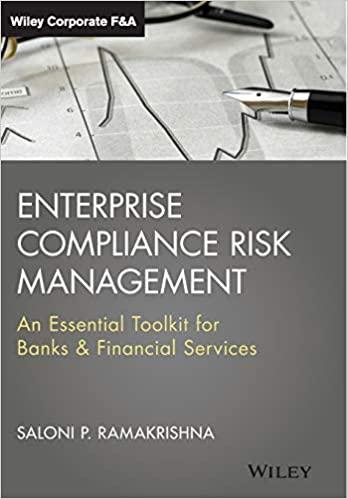| E.None of the answer choices is correct. 3. What is the debt to assets ratio for 2012 (rounded to two decimal places)? Xavier Company reported the following income statement and balance sheet amounts on December 31, 2013. 2013 2012 Net sales revenue (all credit) $1,700,000 Cost of goods sold 1,040,000 Gross margin 660,000 Selling and general expenses 420,000 Interest expense 60,000 Net income $ 180,000 Current assets $ 100,000 $ 90,000 Long-term assets 830,000 800,000 Total assets $930,000 $890,000 Current liabilities $ 72,000 $ 56,000 Long-term liabilities 204,000 390,000 Common stockholders equity 654,000 444,000 Total liabilities and stockholders' equity $930,000 $890,000 Inventory and prepaid expenses account for $50,000 of the 2013 current assets. Average inventory for 2013 is $36,000. Average net accounts receivable for 2013 is $62,000. Average one-day sales are $5,900. There are 12,000 shares of common stock outstanding at the end of 2013. The market price per share of common stock is $27 at the end of 2013. The EPS for 2013 is equal to $1.50 per share. | A.0.30 | | | B.0.50 | | | C.2.00 | | | D.2.05 | | | E.None of the answer choices is correct. 4. The following debt to equity ratio is for two companies in the same industry. Company A Company B Debt to equity ratio 4.5 to 1 13.6 to 1 Which of the following statements is always true? | A.Company A is more profitable than Company B. | | | B.Company B is more profitable than Company A. | | | C.Company A is more highly leveraged than Company B. | | | D.Company B is more highly leveraged than Company A. | | | E.None of the answer choices is correct. 5. Which of the following types of analyses would show whether sales increased by $160,000 from one year to the next? | A.A receivables turnover analysis. | | | B.A common-size analysis. | | | C.A trend analysis. | | | D.A profit margin ratio analysis. | | | E.None of the answer choices is correct. 6. On a common-size balance sheet, current liabilities should be stated as a percentage of: | A.net sales. | | | B.total assets. | | | C.total liabilities. | | | D.total long term liabilities. | | | E.None of the answer choices is correct. 7. Which of the following types of measures focuses primarily on income statement infor-mation? | A.long-term solvency measures. | | | B.short-term liquidity measures. | | | C.market valuation measures. | | | D.profitability measures. | | | E.None of the answer choices is correct. 8. What is the debt to equity ratio for 2013 (rounded to two decimal places)? Xavier Company reported the following income statement and balance sheet amounts on December 31, 2013. 2013 2012 Net sales revenue (all credit) $1,700,000 Cost of goods sold 1,040,000 Gross margin 660,000 Selling and general expenses 420,000 Interest expense 60,000 Net income $ 180,000 Current assets $ 100,000 $ 90,000 Long-term assets 830,000 800,000 Total assets $930,000 $890,000 Current liabilities $ 72,000 $ 56,000 Long-term liabilities 204,000 390,000 Common stockholders equity 654,000 444,000 Total liabilities and stockholders' equity $930,000 $890,000 Inventory and prepaid expenses account for $50,000 of the 2013 current assets. Average inventory for 2013 is $36,000. Average net accounts receivable for 2013 is $62,000. Average one-day sales are $5,900. There are 12,000 shares of common stock outstanding at the end of 2013. The market price per share of common stock is $27 at the end of 2013. The EPS for 2013 is equal to $1.50 per share. | A.0.11 | | | B.0.30 | | | C.0.42 | | | D.0.31 | | | E.None of the answer choices is correct. 9. Pilot Company has the following information available for 2012 and 2013: 2012 2013 Property, Plant, and Equipment $4,500,000 $3,600,000 If you were performing a trend analysis on this information, you would say that property, plant, and equipment has: | A.decreased by 20%. | | | B.decreased by 25%. | | | C.decreased by 11.1%. | | | D.decreased by 80%. | | | E.None of the answer choices is correct. 10. All of the following accounts would typically be used to calculate the quick ratio except: | A.cash. | | | B.equipment. | | | C.accounts payable. | | | D.accounts receivable. | | | E.None of the answer choices is correct. 11. All of the following measures evaluate profitability except: | A.profit margin ratio. | | | B.return on assets. | | | C.market capitalization. | | | D.gross margin ratio. | | | E.None of the answer choices is correct. 12. Which of the following is the best explanation of a company's inventory turnover of 12.0 for the year 2013? | A.the company averages about 12 months sales in inventory. | | | B.The company averages about 12 days sales in inventory. | | | C.The company averages about one month's sales in inventory. | | | D.The company averages about 12 days from the time an item is sold until the cash is collected. | | | E.None of the answer choices is correct. 13. Savanah Company reported the following amounts of net income. Year 1 $50,000 Year 2 $70,000 Year 3 $56,000 Which of the following is the percentage change in net income from Year 2 to Year 3? | A.25.0% | | | B.(30.0%) | | | C.20.0% | | | D.(20.0%) | | | E.None of the answer choices is correct. 14. In general, managers prefer expenses as a percent of net sales to increase over time. | A.True | | | B.False 15. Companies with higher inventory turnover ratios tend to have lower inventory costs, including lower inventory storage and insurance costs, than companies with lower inventory turnover ratios. | | | | | | | | | | | | |






